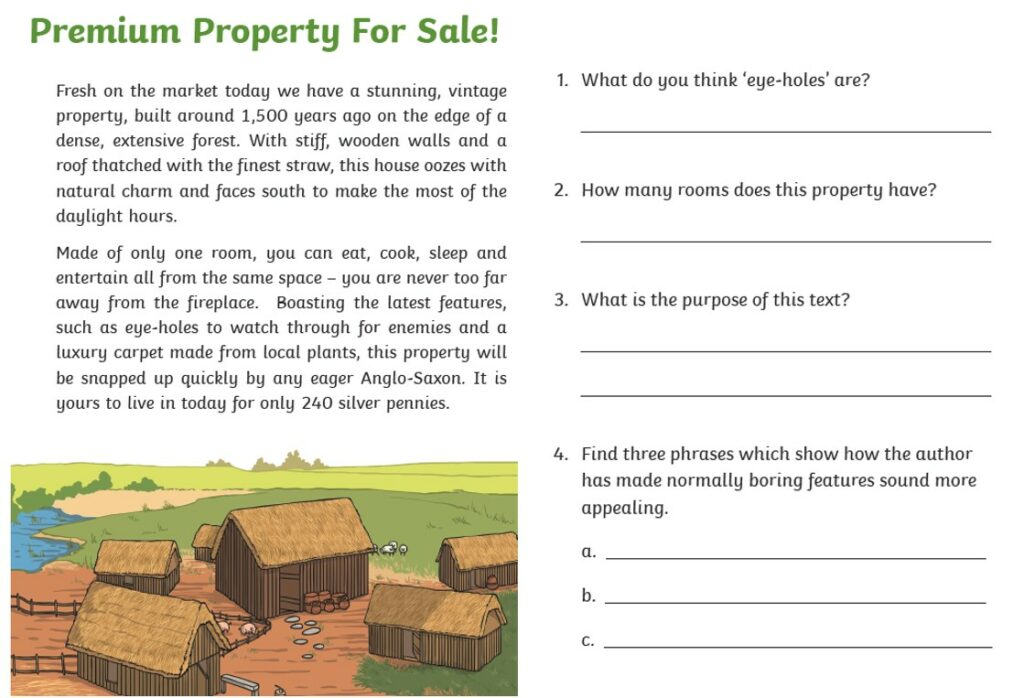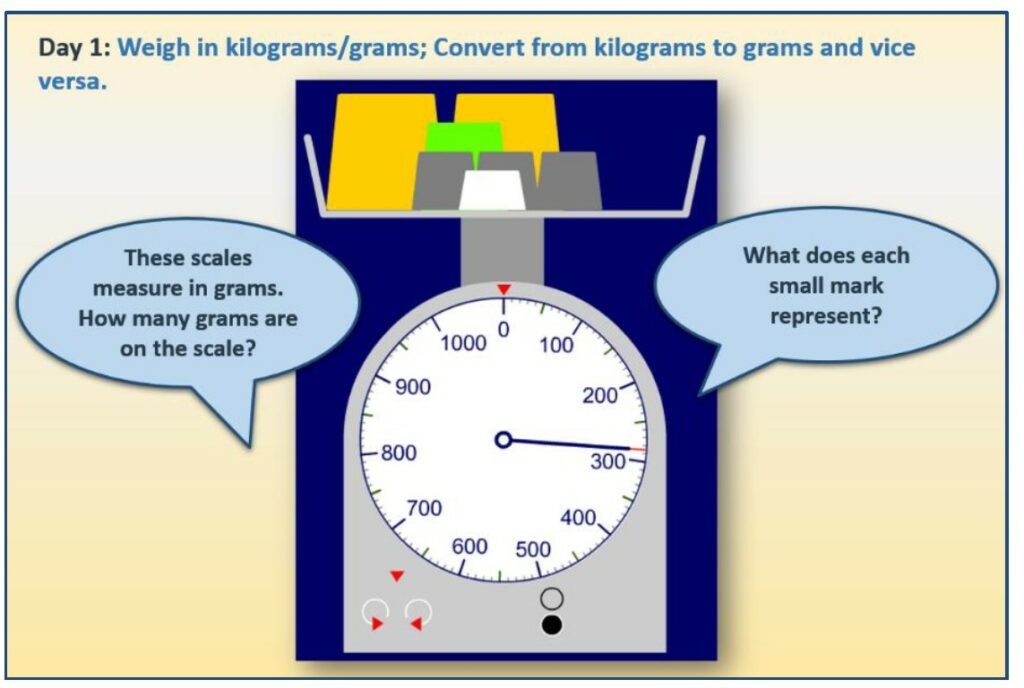I hope you all enjoyed our ‘Express Yourself’ Wellbeing Wednesday yesterday and the chance to come off your device and choose your own activities and starting points. I loved to see what you got busy with – I saw some fab baking, lego playing, walks outside and even a lizard in the bath!!!! We had fun in school designing desserts and making sock puppets! It was a good job we had no devices day – the wifi in class 3 is broken!!!
Right onto today – we are back with some more Beowulf and weighing plus science and French – let’s get going!!
Daily Timetable
- Guided Reading
- English
- Maths
- Science
- French
Today’s Challenges
Guided Reading – I thought today in Guided Reading we would make links back to our theme task. I would like you to read this advert for an Anglo Saxon house, Iike the ones we wrote on Monday. Can you answer the questions linked to the text? Like last week, I am happy for you to discuss your answers with an adult at home as we would in Guided Reading sessions at school. However, if you want to answer them in written form, I have uploaded the page to seesaw.

English – After your brilliant text messages on Tuesday, I would like to concentrate some more on the character of Beowulf and think about how we could describe him. First I would like you to draw a picture of Beowulf and then write words to describe him around your picture. You may want to use an online thesaurus to add more words to your work.
https://www.thesaurus.com/browse/brave?s=t

When you have completed your drawing and added your words, I would like you to use your ideas to write a character description. I would like you to use a range sentences to explain what Beowulf looks like and how he acts. I would also like you to include details and reasons about why Beowulf is a certain character trait. For example,
‘Beowulf is a tall man with a broad jaw-line and blonde hair. He is brave because he faces the monster and also sensible because he brings other men with him to help in the battle. He is confident as he thinks he can beat Grendal but also a risk taker because many people have been killed.’
I can’t wait to read your descriptions.
Maths – We are going to complete a little more work on reading scales today as I noticed in school we need a little more practice.

Remember to look carefully at the numbers you are given in order to work out what each mark on the scale stands for. It might be jumping in 1s, 2s, 5s or 10s. When you have worked out the scale, you can then use this to work out where the arrow is pointing. Let’s try it, have a go at reading the scales on this website…
https://www.transum.org/Maths/Activity/Reading_Scales/Default.asp?Level=2
Next, have a go at the sheets saved on seesaw. I have added two sets of questions, a easy set and a harder set. Think back to the work you completed on Tuesday, if you think you need a little more practice, start with the easier set, if you want more of a challenge, start with the harder set. If you are not sure – you are welcome to complete both – just remember to look carefully at what number the scale is counting in – good luck!
Science – Today for our Science work we are going to look at how we see, and how our eyes work. To start with watch the short video clip.
https://www.bbc.co.uk/bitesize/topics/zgdmsbk/articles/z7by92p
Next, I would like you to draw me a labelled picture of the eye. (use the second image on the above website to help) Can you use it to explain to a grown up at home, how we see images – it is a very clever process!
Extra Challenge…Maisie wears glasses, she would like to know why some people need glasses and others don’t. Can you use the internet to find the answer to her question.
If you want to find out more about how we see, this is the Oak Academy Session linked to the eye.
https://classroom.thenational.academy/lessons/how-can-we-see-objects-6ct6ct
As a final little activity for our light work, you may want to try this little investigation using some mirrors.

French – Bonjour! We’re going to start today’s lesson with a little French poem. This is often used with French children to help them learn their numbers. I’m sure you know numbers to ten already – have a quick practice and shout them out…. GO!
OK now you are warmed up and ready let’s take a look at the poem.

Watch the video to hear the poem being read and to find out what your first activity is. Then pause the video whilst you complete the activity.
When you are ready, play the video again for aquick-draw game. The game will also give you the answers to the first activity so you can check your own work.
Now we’re going to look at creating some new sentence stems. J’adore means ‘I love’ and je déteste means ‘I hate’. Can you translate these sentences?

Your final task for today is to used what you have learned today to create your own sentences like the ones above.
Challenge: Write the correct French word for each animal you choose instead of drawing a picture.
À bientôt!
